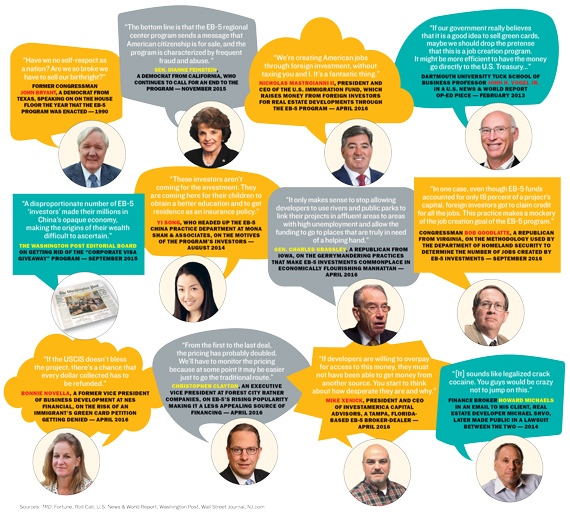The EB-5 visa program, which grants foreigners a provisional right to live, work and study in America in exchange for investing at least $500,000 in job-creating business ventures, was extended once again in late September. But, in this case, only until Dec. 9, at which point the program will likely face significant changes if it doesn’t expire or get another short-term extension. And a major beneficiary of the policy — the New York City real estate industry — is closely watching the various proposed overhauls. Major developers including Forest City Ratner Companies, the Durst Organization, Silverstein Properties and Related Companies have taken low-cost loans from the program’s aspiring immigrants and used them to plug financing gaps on projects throughout the city.
Enthusiasm for such an arrangement isn’t surprising if one looks at the math. Foreigners agree to a below-market return on their investment (reportedly 1 percent in some cases) because they get something else out of it: a United States green card. Meanwhile, developers are able to reap the benefits of cheap financing by acting as middlemen for something that costs them nothing, another individual’s path to citizenship.
What is surprising is how long it took for EB-5 to gain traction. While Congress created the program in 1990 to help stimulate the U.S. economy, applications didn’t begin flooding in until after the 2008 financial crisis. That’s when developers’ and other entrepreneurs’ need for financing dovetailed with the desire of foreigners — overwhelmingly mainland Chinese citizens — to gain entry to the States. Most recently, EB-5 has become a victim of its own success.
A waiting list has made it less appealing for those who initially found the program’s quick turnaround enticing. In the first half of 2016, applications plunged 51 percent from a year earlier, according to the U.S. Citizenship and Immigration Services agency. And as major reform proposals get floated, including a potential increased price of entry, the possibility remains that all the scrutiny could doom the program in the long run. As the debate rumbles on, TRD takes a look at what stakeholders and opponents have said in recent months and throughout the years.

